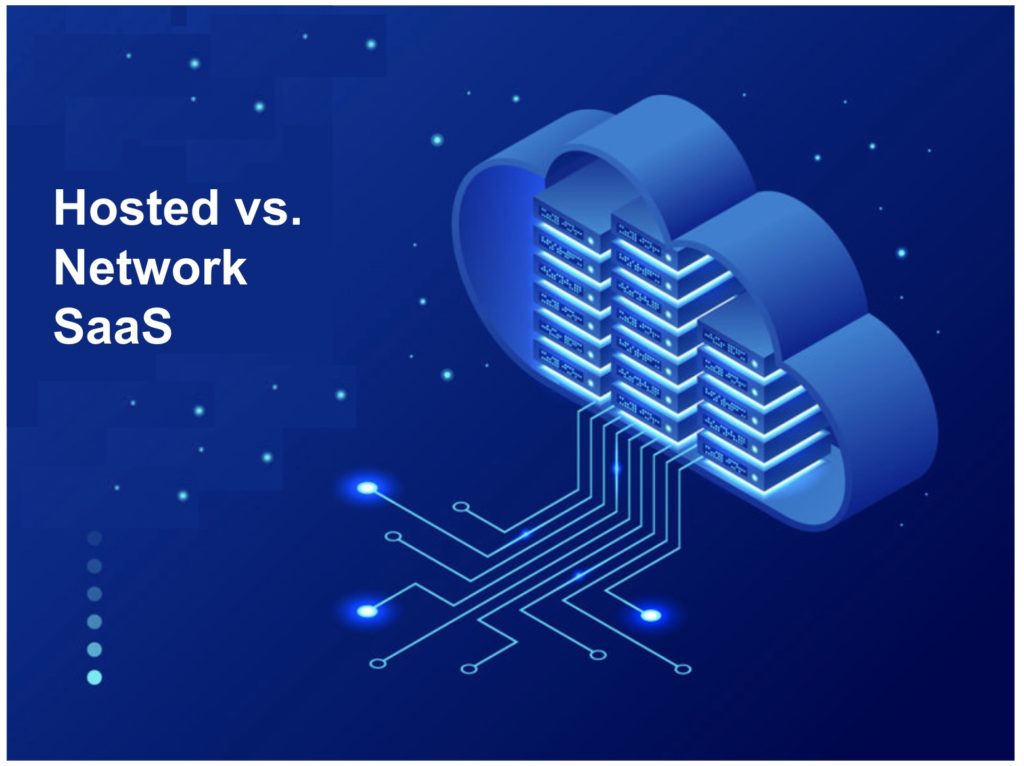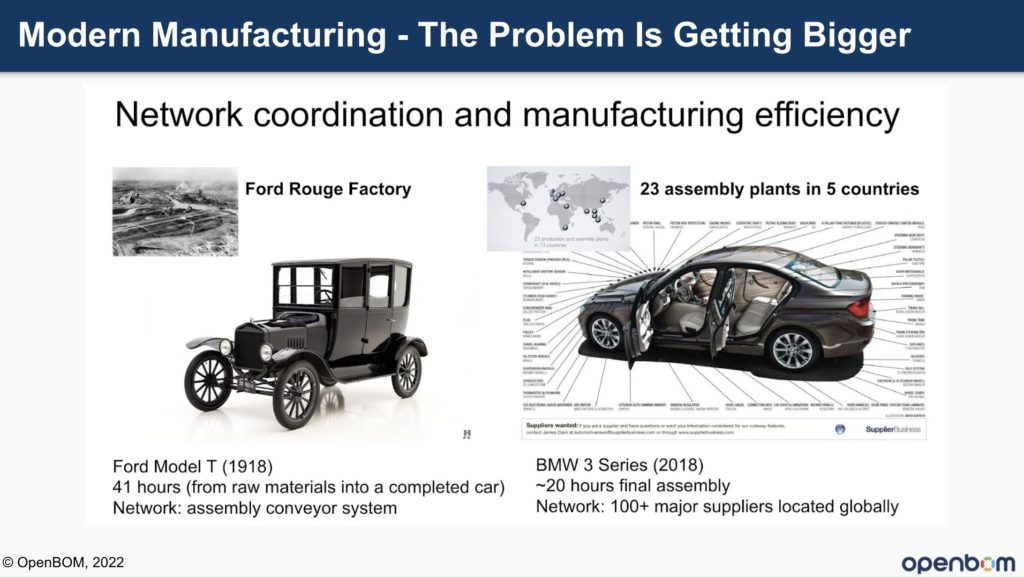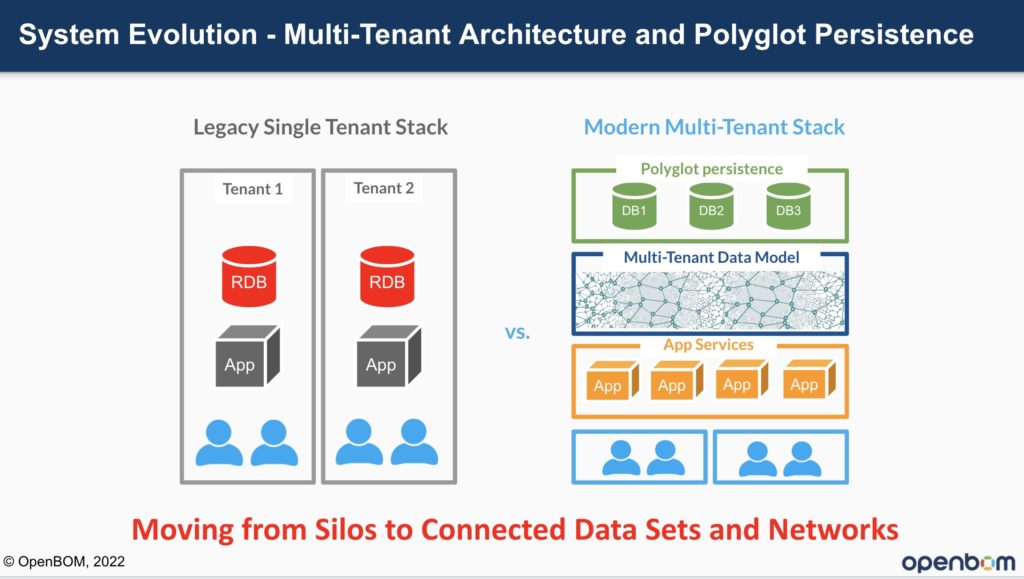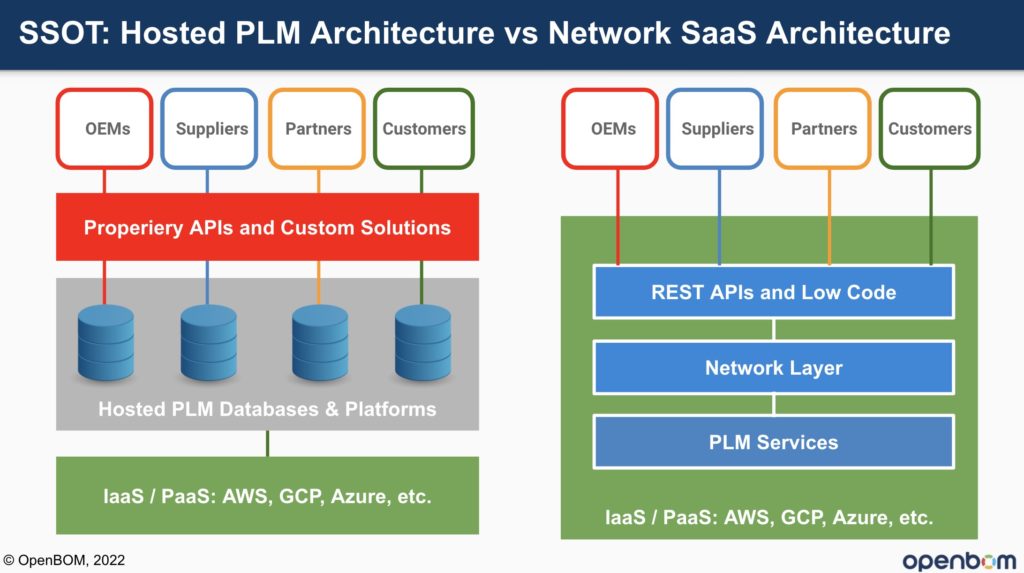
Earlier this week, I was traveling to the PLM Innovation conference PI DX 2022 USA that took place in sunny Atlanta, GA. I’m still digesting the events and presentations I’ve seen. In my article today, I’d like to speak about the presentation I’ve made during the conference, which was speaking about the Single Source of Truth and the transformation that is happening now in PLM architecture.
Why Is PLM Architecture Changing?
For the last couple of decades, PLM architecture was massively unchanged. Starting back in the 1990s as an RDBMS-based system, PLM systems were standardized based on the usage of relational databases and basically have not changed much. Don’t be confused – PLM systems were changing and added new functions, features, and sometimes even large chunks of strategic development such as BOM management, Configuration Control, IoT, and others. However, the fundamental PLM architecture didn’t change. It was a monolithic application with a significant data platform capable of turning RDBMS into a scalable object-oriented data engine. PLM vendors were polishing these engines making them more scalable and independent. However, all these systems were holding the same architecture of 2-3 tier systems with a database-driven backend.
Modern manufacturing companies are changing and, at first, looking at how to work in distributed manufacturing locations, with multiple teams and individuals. This by itself raises the question how existing PLM architecture can support data integration across multiple silos and multiple companies.
The existing Single Source of Truth (SSOT) approach assumes management of data in a single platform (database) without the ability to share data between companies without exporting it via Excel or other special systems and without forcing all companies under a single OEM PLM Admin control.
However, the reality of manufacturing companies is changing as well as the need to bring a new type of system capable of supporting the modern network manufacturing paradigm, connecting divisions of the large companies, suppliers, contractors, and other companies.

Single-Tenant vs Multi-Tenant
In my presentation, I described what is the difference between these two architectures and how they can be used to support processes across multiple silos. You can see in the picture below the two architectures compared

The main difference between these two architectures is an additional network layer that is representing a logic model of tenants (eg. user, team, company) and the ability of the system to provide granular access to the data based on this network logic model (eg. show all assemblies from tenant A). Even more, the ability to access data between tenants based on the specific rules (eg. share command).
Network Layer and SaaS Platforms
Multi-tenant system provides a rich set of additional functionality that was not available before. The network architecture allows to simplify data management across multiple silos and companies, and new capabilities of data management (eg. Graph Database, Analytics, Flexible data models, etc) provides new SaaS platforms withe new features and functions. It is becoming possible because of the new polyglot persistence architecture, multiple databases strategies, demand for collaboration, and data sharing. In the picture below you, can see my comparison between the two architectures.

PI DX 2022 USA – Slide Deck
In the slide deck before you can see my presentation. Check this out and tell me what do you think? The presentation is covering technological foundation and some product features we developed at OpenBOM for the last few years.
Here are some of my concluding remarks from the presentation.
- The single PLM dream is over. Traditional PLM architectures are built around SQL databases that are limited, siloed, and cannot be used efficiently in a modern manufacturing environment.
- SaaS platforms and data services are a way to focus on information flow and data handover in the organization. It is about data and not a database.
- There is a need to break through company boundaries. Modern multi-tenant architectures provide a network layer to connect people across multiple organizations.
- Companies increasingly are looking at how to use IaaS and PaaS platforms as a foundation for their solutions.
- Multi-tenant SaaS solutions are a platform for SMEs.
- PLM services are the way to integrate SaaS solutions for enterprises.
- Education is extremely important to support digital transformation.
What is my conclusion?
For the next 5 years, PLM industry will be actively figuring out the future PLM platform architecture. The tectonic shift towards cloud architectures already happened on the border of the 2020s. Manufacturing companies are relying on AWS, Azure, GCP and other cloud platforms as a foundation of manufacturing solutions. It requires new architecture of PLM platforms to be created. Legacy PLM architectures with monolithic platforms and RDBMS-based backend will continue to be at service (especially for larger enterprise) because of their maturity and existing investments for some time. However, manufacturing companies will be actively looking for new platforms to support their transformation and building new digital business. From my perspective, the first results of network PLM architectures shows clear advantages in the ways companies can build remote data access with concurrent data administration and real-time collaboration. Just my thoughts…
Best, Oleg
Disclaimer: I’m co-founder and CEO of OpenBOM developing a digital cloud-native PLM platform that manages product data and connects manufacturers, construction companies, and their supply chain networks. My opinion can be unintentionally biased.
The post PLM Architecture – Hosted PLM vs Multi-Tenant SaaS appeared first on Beyond PLM (Product Lifecycle Management) Blog.



Be the first to post a comment.